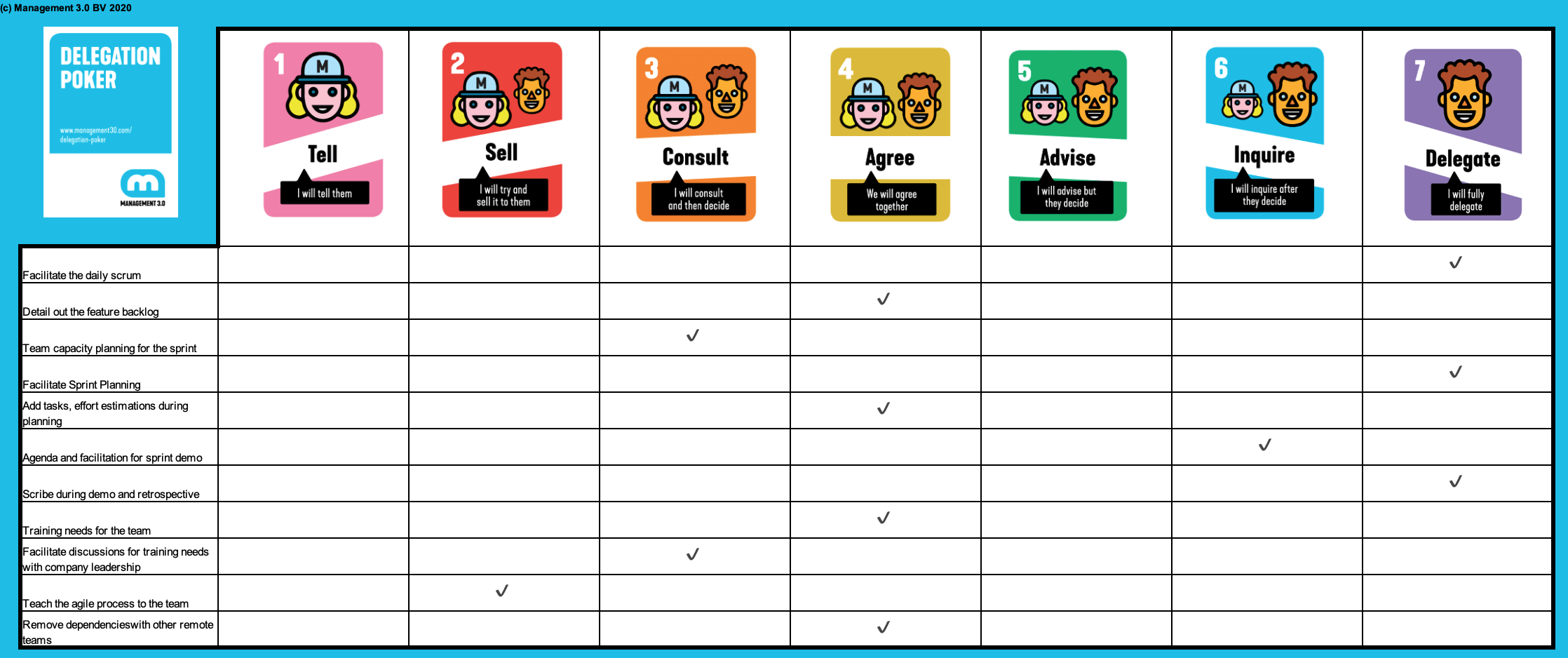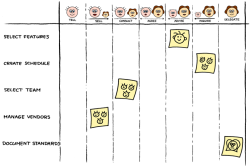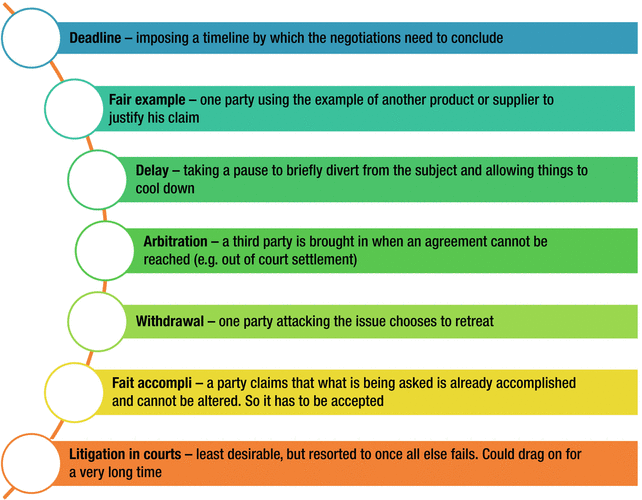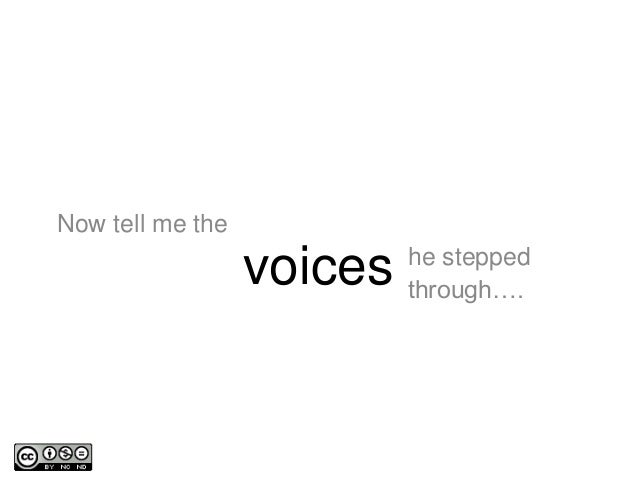Delegation Poker Scenarios

Delegation Poker 5 years ago. Tools. 0 Many times there is not clarity about some hard decisions that Managers has to rule and many times there are some decisions that should be delegated (of course after gaining the truth). Delegation Poker is an effective method to create transparency about decision processes in a playful way and to relieve everyone involved in the process. The card game can also provide leadership impulses, promote the self-organization of the team and create security through decision-making structures.
Under the relevant constitutional process, the vote in the House is by state delegation, where each delegation casts one vote, which is determined by the majority of the representatives in that state. Currently, there are 26 states that have a majority Republican House delegation. 23 states have a majority Democratic delegation. By Nathalie Karasek. This blog is a digital memory for me. I store nuggets of information, ideas and resources on these pages so that I can access and share them easily at any time, from everywhere.

Influence, Delegation, and Decision-Making
Avoiding Micro- and Undermanagement
Micromanagement leads to mistrust, lack of autonomy, demotivation.Undermanagement leads to isolation, bewilderment, cluelessness.Just-right management (“Goldilocks”) leads to increase in engagement.

Decision-Making
Act Last, Read the Room, and Taste the Soup - by Rands in Repose. Takeaway: In times of decision-making, it’s best to go last in expressing your views because by this time, everyone else has provided context you’ll need to make the best decision. Also, take the temperature of whatever room you’re in so you can communicate effectively, and don’t micromanage.
Battling Perfectionism - by Julie Zhuo. Takeaway: “The problem is that trying to do things perfectly all the time often leads to worse prioritization decisions when you take a step back…The thing is, perfectionism tends to be rooted in fear rather than opportunity.”
Business Value Game - by Andrea Tomasini. Takeaway: an interactive game in which a “product management board” of stakeholders decides, in a manner inspired by Planning Poker, which goals to prioritize based on relative value to the business.
Decide How to Decide: Empowering Product Ownership — by Ellen Gottesdiener. Takeaway: Offers suggestions to help teams and product owners reach decisions without making assumptions about whether they’ve come to a consensus or not and includes a “gradient of agreement”
Decision-Making Auditing - by Tomasz Tunguz. Takeaway: “I’ll never know as much about a company’s operations or strategy or a sector as a founder/management team. But, I still want to be helpful. So, the most effective strategy I’ve found so far is to probe how the decision was made. Answer a question with a trenchant question, which coincidentally, ties back to some of the best advice I’ve received from a founder.”
Decision Making in a Company with No Managers - by Jan Zborowski. Takeaway: Ensuring a safe decision-making environment for all employees is a must in a self-managed company. Letting ordinary employees propose an idea and then implement it, to jointly shape the company’s future, results in a low rotation indicator. A flat and transparent business model translates directly into clients’ happiness and a company’s growth.
“Do We All Agree” Is a Terrible Question - by Hunter Walk. Takeaway: We often confuse ‘collaboration’ with ‘consensus.’ The former is about engaging a group of people to work together and discuss ideas. It aims to make the whole greater than the sum of its parts. The best leaders are certainly collaborative.”
How to De-Risk a Startup— by Leo Polovets. Takeaway: lists common risks and heuristics for risk mitigation and decision-making. States that showing is better than telling; external validation is better than personal opinion, and more data is better. Identifies types of risk, from product quality and recruiting to product/market fit.
How to Make One of the Most Difficult Decisions as a Manager — by Netanel Lev. Takeaway: Understand that leaving your job as a manager is a process with emotions involved. Find a mentor to guide you through the situation, have an exit plan, don’t blame other people or be blindly loyal, and trust your instincts.
How We Make Decisions at Coinbase - by Brian Armstrong. Takeaway: “The vast majority of decisions in a company are low-risk and should be made unilaterally by the owner of that area (e.g. should we move the stand up meeting from Mon to Tues this week). A decision-making framework is only needed when there is lack of clarity about a decision that is higher risk. Higher risk can mean that the decision has long term implications or that it can be costly to unwind if the wrong decision is made.” Includes a decision-making template.
In 2018, Focus on Quality of Decision Over Quality of Outcome - by Hunter Walk. Takeaway: “In any system with relatively low cost of failure and repeatable game scenarios, it would seem that getting the decision right is actually what matters.”
The 90% Agreement Rule - by Lawrence Ripsher. Takeaway: Ripsher asserts that “we spend 90% of our time, talking about the 10% of things we disagree on.” This takes up time and energy. Instead, “[c]reate clarity (and build on) wherever there is ‘about 90% agreement’ first— then come back around and address the disagreements after.”
Ruthless Prioritization — by Brandon Chu. Takeaway: “Estimate return on investment for each project; apply three constraints: dependencies, timeline and team composition, and sequence projects based on ROI and constraints.” Includes a template for triaging bugs as a tool for getting teams to think about priorities.
Second-Order Thinking: What Smart People Use to Outperform - by Farnham Street. Takeaway: “Second-order thinkers take into account a lot of what we put into our decision journals. Things like, What is the range of possible outcomes? What’s the probability I’m right? What’s the follow-on? How could I be wrong? The real difference for me is that first-order thinkers are the people that look for things that are simple, easy, and defendable. Second-order thinkers push harder and don’t accept the first conclusion.”
Strategic Decisions: When Can You Trust Your Gut? - by McKinsey. Takeaway: An interview with psychologist Daniel Kahneman and scientist Gary Klein. “Society’s epitome of credibility is John Wayne, who sizes up a situation and says, ‘Here’s what I’m going to do’—and you follow him. We both worry about leaders in complex situations who don’t have enough experience, who are just going with their intuition and not monitoring it, not thinking about it.”—Klein.
3 Ways to Ease the Pain of Slow and Frustrating Decision Making - by the Corporate Rebels. Takeaway: Change your language to imply empowerment; distribute decision-making authority by practice, and push decision making authority down through proper training.
Why Humble People Make Better Decisions - by Drake Baer. Takeaway: A Duke University research study shows that people with high “intellectual humility” are more open to the information coming their way, as a form of “information sensitivity.” This means they end up making more informed decisions than those who need to be right and ignore evidence.
Why Leaders Who Listen Achieve Breakthroughs - by Elizabeth Doty. Takeaway: Two-way conversations (as opposed to conversations in which the “sender” of a message focuses on their own half, instead of paying equal attention to the recipient’s message and response) can make collaboration occur at a level that can be game-changing. Decisions become better and more reflective/inclusive of different perspectives and information sources.
Delegation
The 48 Laws of Power - by Robert Greene and Joost Elffers. A history of power, condensed into 48 laws. Book notes by Joe Goldberg here.
Applying the Universal Scalability Law to organisations - by Adrian Colyer. Takeaways: “a) It’s really important you learn to delegate effectively and to choose carefully the things that you do get involved in. b) As the organisation grows, strive to keep the number of stakeholders that need to be involved in any decision down to a minimum. c) You need to keep a strict handle on how many things you’re involved in concurrently. d) Working at or close to 100% utilization will slow to a crawl everything that depends on you.”
Delegate Outcomes, Not Activities - by Claire Lew. Takeaway: “When you delegate the outcomes and not the activities, you help employees not just execute for the task at hand, but equip them for every future task after that. You’re giving true ownership to your team.”
How to Decide Which Tasks to Delegate - by Jenny Blake. Takeaway: “Conduct an audit using the six T’s to determine what tasks make the most sense to offload”—tiny, tedious, time-consuming, teachable, terrible at, and time-sensitive. Includes a delegation template you can use as a model for offloading tasks.
How to Delegate Better with the 7 Delegation Levels (video) - by Jürgen Appelo of M 3.0. Takeaway: a quick and clear video outlining seven levels of delegation: tell, sell, consult, agree, advise, inquire and delegate. “By distributing control and delegating decision making in an organization, we empower both workers and managers, enabling resilience and agility. This makes delegation truly an investment and an achievement.” This accompanying article links to tips and exercises your team case use to reinforce delegation levels.
How to “Get out of the Way” - by Phil Sarin. Takeaways: Remove mechanisms of control: examples include estimation, meetings, sprints; increase focus (eliminate projects and reduce the number of priorities to 1-2); give authority to choose any approach that would lead to success. Need strong agreement on the goals of the project. If your managing principle is trust and not control, then people matter more than processes do.
How to Handle “The Situation” - by Michael Lopp. Takeaways:a) Do I understand the complete context, b) am I the right person to handle it, c) do I trust my information, d) are there any inconsistencies and do I understand them, e) do I understand my biases, f) do I understand my emotional state relative to the issue, and g) can I coherently explain multiple perspectives of it?
Identify Leaders By Giving People Assignments - by Brad Feld. Takeaway: categorize the responses in one of three ways: 50% vanish; 25% do the assignment; and 25% make shit happen well beyond what the assignment was—these are the leaders.
Lazy Leadership - by MetaLab founder Andrew Wilkinson. Takeaway: “I now think of my companies as machines. I determine the result that I want, design a machine that will produce the result, then figure out what sort of people I need as part of it. If I’m part of the machine, I think about my strengths and weaknesses, and if necessary replace myself with someone better suited to the role.”
Managing for Progress and the Loss-Aversion Principle - by Tom Tunguz. Takeaway: “The best managers craft roles and assign projects that position their teammates to see and feel the result of their work directly.”
Renovating Teams - by Ranganathan Balashanmugam. Takeaway: provides a framework for diagnosing and supporting dysfunctional teams through retrospectives, observation, and careful diagnosis.
“Screaming Monkey” analogy - by William Oncken, Jr. and Donald L. Wass. Takeaway: Think of each work item as a screaming monkey, and ask these questions to identify the important ones: Should we even fed the monkey?; Who should feed the monkey?
Situational Leadership Theory - Wikipedia entry. Takeaways: Proficiency depends on knowledge, ability, and aptitude; commitment describes motivation, interest, enthusiasm, and confidence; different levels of proficiency/commitment need different amounts of direction/support.
Turn the Ship Around! How to Create Leadership at Every Level - by Stan Skrabut. Review of David Marquet’s book, which is divided into four sections: Starting Over, Control, Competence, and Clarity. More notes by Joe Goldberg here.
Why Delegate? - by Margaret Gould Stewart. Takeaway: “If there isn’t something going off the rails on your team, then I know you’re micro-managing them. You’re good at what you do, and if you stay in the weeds on everything, you’ll keep things going perfectly, for a while. But eventually two things will happen. One, you’ll burn out. And two, you’ll eventually start to seriously piss off your team. So I better see some things going sideways, on a fairly regular basis.”
Delegation as “Pressure”
Delegation Poker Scenarios Online
Do You Feel Pressure or Do You Apply Pressure? - by Ben Horowitz. About using “pressure” as an analogy for delegation.
How to Put the Right Amount of Pressure on Your Team - by Liane Davey. Takeaway: There’s an ideal level of stress; be mindful of it and modulate.
Management Is Not About Asking People to do Stuff - by Steven Sinofsky. Takeaway: “[M]anagers should not ask people on the team to do yucky work that the manager doesn’t want to do. Or said another way, if there’s something yucky to be done then managers should join in. That’s all well and good, but is also just basic civility I think.”
Influence Others


Delegation Poker Scenarios Against
Building a Delivery Team - by Bill DeRusha. Takeaway: How to leverage communication and tools like team charters and retrospectives to form a new team effectively and guide it to deliver on time, even on a tight schedule.
Communication Training Tomorrow! (no, not really) - by Jen Bunk. Takeaway: Commmunication trainings, and communication skills, aren’t enough to fix cultural issues. You need to go deeper and explore where your systems are failing.
11 Top Tips for a Successful Technical Presentation - by Scott Hanselman. Takeaway: detail-oriented tips ranging from font type/size to being mindful of your distracting personal habits.
Escaping E-mail Hell - by Julie Zhuo. Takeaway: Tips for communicating more succinctly in emails to reduce workload and also increase the chances that others will read them. Also includes this nugget: “Forwarding a huge thread with nothing more than ‘Thoughts?’ at the start is the e-mail equivalent of a flaming bag of dog poop on your doorstep.”
Etsy’s Charter of Mindful Communication - by Lara Hogan and Etsy’s Culture & Engagement team. Takeaway: When engaging with someone, keep it REAL—”Reflect on the dynamics in the room;Elevate the conversation; Assume best intentions; Listen to learn.”
42 Things Non-Front-Liners Misunderstand - by John Cutler. Takeaway: “It is unfair to expect people who haven’t worked on the front lines in software development to just get it. Just as, I’m guessing, it is hard for developers and UXers to grok sales and marketing, being a CEO, and working in HR. Assuming malice is a big mistake. We all want great outcomes for our respective businesses, but have a hard time bridging the divide.”
The Heartbeat Interview with Amy Gallo (video) - by Claire Lew. Takeaway: A chat about how leaders can become friendly and human with their teams, set boundaries and be friendly. Being human at work builds empathy and care.
How to Blast Through Silo Mentality to Create a Culture of Experimentation - by Lindsay Kwan. Takeaway: Align your stakeholders on a vision for experimentation; get buy-in from stakeholders and leaders; clarify your experimentation protocol; get strategic with cross-functional teams; communicate.
How to Improve Emotional Intelligence - by Darius Foroux. Takeaway: Identify, interpret, manage your emotions. “When you can identify your own emotions, you will also get better at identifying other people’s emotions.” This can positively impact your leadership abilities.
How to Influence Culture When You’re Not the CEO - by Claire Lew. Takeaway: Model what you’d like to be true of your team; speak up with improvement ideas through the prism of team instead of individual/personal; give space, grace, and gratitude to leaders.
How to Make Your Engineering Team More Effective - by Edmond Lau. Takeaway: Gather input as to what’s hard or frustrating; explicitly design how to align someone’s growth goals with what creates value; give and request frequent and honest feedback; leverage your strengths to level up the team; reduce sources of complexity, and create more opportunities for collaboration.
How to Win Hearts & Minds - Lessons Learned from Electoral Politics (video) - by K. Gray & C. Young. Takeaway: This GOTO Amsterdam talk connnects methods used in political campaigns to their useful application in a tech organization, so that you can connect with teams and influence them. You have to blend facts with emotional resonance.
The Indispensable Document for the Modern Manager - by First Round. Takeaway: “To grow the company and as a leader, every manager at a startup needs to scale herself. At the end of the day, writing a user guide is an exercise in self-awareness. What teams want from their leaders more than anything else is predictability and authenticity. This leads to trust. With trust, you can be unstoppable. Give yourself a leg up and take the time to self-reflect, write and revise a user guide. If your founding team and early hires are friends or past colleagues — this is especially critical.”
Leadership Is Not About Your Good Intentions - by Johnathan Nightingale. Takeaway: “If you want to be a leader, own it. Like you would anywhere else in your life. Work harder to understand the context. Develop better strategies for anticipating future failure and avoiding it. The stuff you expect junior folks to do.”
Leading by Speaking (video) - by Lara Hogan. Takeaway: “In our work, we each have moments of saying some prepared words under a spotlight - whether it’s during team standups, giving a presentation to a client, or pitching your promotion to your boss - and yet we all have different fears about those moments. In this talk, we’ll walk through the spectrum of public speaking fears and learn tactics to address them, so you can feel confident and equipped to step into the spotlight.”
Making Engineering Team Communication Clearer, Faster, Better - by First Round. Takeaway: Using a technical design review system with design documents can help teams communicate effectively and clearly. The article links to a design doc template by Google, and a completed example.
Master the Art of Influence — Persuasion as a Skill and Habit - by FirstRound. Takeaway: “To persuade someone, you need to speak as much as you can to System I [of the brain]— the child, the interns — who want to believe you (because it just makes so much darn sense, what’s not to love?). Trouble is, most tech operators express themselves with complexity, nuance, facts and figures. That’s their default, and it doesn’t appeal to people’s unconscious processor.”
Meeting Resistance and Moving Forward - by Linda Rising. Takeaway: A keynote talk featuring tips for handling naysayers and skeptics.
Never Split the Difference Cheat-Sheet - by Yan-David Erlich. Takeaway: a detailed, six-page summary of Chris Voss’ Never Split the Difference, the 2016 book about negotiation. Includes blog post.
9 Tips: How IT Leaders Can Build Better Relationships - by Carla Rudder. Takeaway: Be a partner, be transparent, be truthful, be in constant communication, be OK with being wrong, be in the moment, be engaged, be a team player, be candid.
Public Speaking Resources - by VM Brasseur. Takeaway: A collection of resources on speaker training/tips, technical conferences, proposing talks and more.
The Science of Speaking is the Art of Being Heard - by First Round. Takeaway: “Communication is not just about what you say, it’s about the reaction it causes in the listener. Often we think delivering a message is enough without checking to see if it was actually received. This can be made more efficient with attention to meta models. Lastly, communication is making sure there’s enough shared context for the person to act on what’s next.”
Stop Asking Your Employees This One Question — It’s Hurting Them - by Claire Lew. Takeaway: The question is, “How can I help you?” This is lazy, puts pressure on the employee, and is vague. Instead, “[p]oint out your own potential flaw, instead of waiting for your employee to point it out. Offer a critique of your own actions, instead waiting to see if it’s something your employee brings up.”
Uniquely HR - by Gary Ford. Takeaway: Influence is the power to affect someone/something without directly forcing them. It’s about establishing credibility, finding common ground, and connecting emotionally. A systemic approach to influencing.
Use Coaching Techniques to Help People Make Their Own Decisions (video) - by Meredith Noble. Takeaway: A talk about how to use the GROW coaching technique “to structure conversations and help people make their own decisions; ask questions that encourage people to consider new approaches; embrace the coaching mindset, and and let go of the urge to play expert.”